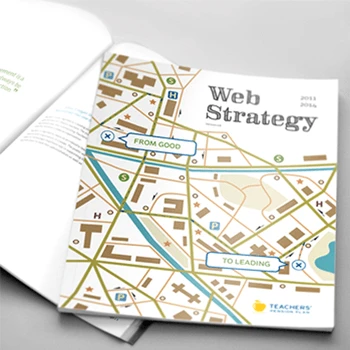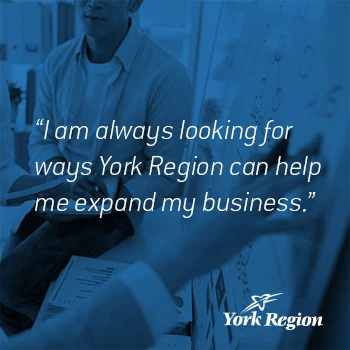What exactly is web governance and why do we need it?
Web governance is a set of processes and steps that guide the creation, vetting, and publishing of any content on your website. It ensures your website continues to fulfill its mission over the long term by keeping users at the front and center. Without governance frameworks, websites lose focus and user relevance as content grows unmanageable and decisions become ad hoc.
Tip: Assess whether your current website decisions are driven by user needs or internal convenience to understand your governance gaps.
How does web governance connect to our overall digital strategy?
Through our Experience Thinking framework, web governance connects brand expression, content strategy, product functionality, and service delivery into cohesive user experiences. Governance ensures all website changes support strategic goals rather than creating disconnected experiences that confuse users and waste organizational resources.
Tip: Map your current website change processes against your strategic objectives to identify where governance gaps are undermining your digital strategy.
What's the difference between web governance and content management?
Content management focuses on day-to-day publishing and technical administration, while web governance provides the strategic framework for decision-making, quality standards, and long-term website evolution. Governance includes content management but extends to stakeholder roles, approval processes, and strategic alignment that content management alone cannot address.
Tip: Evaluate whether your current content management processes include strategic decision-making frameworks or just operational publishing workflows.
Why do websites lose focus over time without governance?
Websites grow unmanageable quickly without governance checks in place to oversee ever-growing content. Departments add content without understanding desired user experience, redundant materials accumulate, and outdated information remains because no clear removal processes exist. This creates digital archives rather than effective user tools.
Tip: Conduct a content audit to identify redundant, outdated, or trivial content as indicators of governance gaps in your current processes.
What organizational challenges does web governance address?
Governance addresses the multi-stakeholder, multi-provider nature of content creation where dozens of sources contribute to a single platform through different creation, vetting, and publishing processes. It provides structured approaches to capture essential governance elements, compare stakeholder processes, and create cohesive role and responsibility frameworks.
Tip: Map all current contributors to your website to understand the complexity of coordination your governance framework needs to address.
How does web governance support user experience quality?
Governance ensures that all website changes serve user needs by establishing user-centered decision criteria, quality standards, and review processes. It prevents internal organizational structure from overriding user mental models and maintains content relevance through systematic evaluation and update cycles that keep users at the front and center.
Tip: Review recent website changes to determine whether they were driven by user research or internal organizational priorities.
What's your approach to developing governance frameworks?
We begin by understanding current as-is processes through interviews, surveys, and workshops with content creators and stakeholders. Then we capture to-be processes that define how content creation, vetting, and publishing should work in the future. This detailed workflow mapping creates governance frameworks that address both immediate needs and long-term sustainability.
Tip: Start by documenting who currently makes content decisions and how those decisions get implemented before designing future processes.
How do you map current organizational processes for governance?
Process mapping requires structured approaches to capture essential governance elements across all stakeholder groups involved in website management. We interview client-facing staff, content creators, technical administrators, and approval authorities to understand formal and informal workflows. This reveals the range from highly organized to chaotic content creation patterns.
Tip: Include informal workflow documentation alongside official processes to understand how decisions actually get made in practice.
What elements are essential in effective governance frameworks?
Essential elements include clear roles and responsibilities, content creation and approval workflows, quality standards and review processes, retention and archiving policies, stakeholder communication protocols, and training programs. The framework must address both strategic decision-making and operational implementation to maintain long-term effectiveness.
Tip: Focus on frameworks that can evolve with organizational growth rather than rigid processes that become obstacles as needs change.
How do you ensure governance frameworks are practical and implementable?
We design frameworks through collaborative workshops that involve all stakeholder groups, test processes through role-playing exercises and simulation workshops, and pilot governance procedures in real business circumstances. This iterative approach ensures frameworks work in practice before full implementation and addresses organizational culture alongside process design.
Tip: Test governance processes with realistic scenarios and time constraints rather than ideal conditions to ensure practical viability.
What's your approach to stakeholder analysis for governance?
Stakeholder analysis captures all internal and external groups involved in website management, their roles in content creation and approval, decision-making authority levels, and communication patterns. We map stakeholder relationships, identify influence networks, and design governance that leverages existing organizational dynamics while improving coordination.
Tip: Include informal influencers and decision-makers in stakeholder analysis rather than just official organizational hierarchy.
How do you design governance for different organizational structures?
Governance design adapts to centralized, decentralized, and matrix organizational models by recognizing different communication patterns, decision-making authorities, and resource allocation approaches. We design frameworks that work within existing structures while improving coordination across departments and business units that contribute to website management.
Tip: Assess your organizational decision-making culture before designing governance processes to ensure alignment with how your organization actually operates.
How does artificial intelligence impact governance framework design?
AI transforms governance by enabling automated content analysis, policy compliance checking, and quality assurance processes. We design governance frameworks that leverage AI for pattern recognition and routine analysis while maintaining human oversight for strategic decisions, content quality evaluation, and stakeholder communication that requires judgment and empathy.
Tip: Identify routine governance tasks that AI can automate while preserving human decision-making for complex content strategy and user experience choices.
How do you approach governance implementation and rollout?
Implementation begins with pilot projects in specific departments or content areas to test governance processes in real business circumstances. We monitor pilots over weeks or months to work out governance issues, improve processes, and build organizational confidence before broader rollout. This gradual approach ensures governance frameworks prove effective before full deployment.
Tip: Choose pilot areas that represent different organizational challenges rather than starting with the easiest departments to ensure governance robustness.
What training and change management support do you provide?
Training includes governance communication, workflow education, role clarification, and on-the-job support to keep skill levels high throughout the organization. We complete change management programs that help organizations integrate content management practices and provide ongoing support as stakeholders adapt to new governance frameworks.
Tip: Plan training programs that address both process understanding and cultural change rather than just technical workflow instruction.
How do you test governance frameworks before full implementation?
We conduct role-playing and simulation workshops that literally walk through updating, vetting, reviewing, and publishing content using proposed governance frameworks. Testing involves people, systems, and content to understand timing, stakeholder involvement, and crisis situation handling. This reveals practical challenges before they affect live operations.
Tip: Test governance frameworks with urgent content scenarios and tight deadlines rather than just routine content updates to ensure real-world viability.
What's your approach to phased governance implementation?
Phased implementation starts with foundational elements like roles and responsibilities, then adds workflow processes, quality standards, and finally advanced features like automated compliance checking. Each phase builds organizational capability while delivering immediate value, preventing overwhelming stakeholders with complete governance transformation all at once.
Tip: Sequence implementation phases to deliver early wins that build stakeholder confidence while gradually introducing more sophisticated governance capabilities.
How do you handle resistance to new governance processes?
Resistance often stems from unclear value propositions, increased workload concerns, or established informal processes that people prefer. We address resistance through stakeholder involvement in governance design, clear communication of benefits, pilot programs that demonstrate value, and gradual implementation that respects existing successful practices.
Tip: Identify what currently works well in informal processes and incorporate those elements into formal governance rather than discarding all existing practices.
What support do you provide during governance transition periods?
Transition support includes ongoing consultation during implementation, troubleshooting guidance when challenges arise, process refinement based on real-world experience, and stakeholder coaching to build internal governance expertise. We provide documentation, training materials, and communication templates that support ongoing governance operation.
Tip: Plan transition support periods that extend beyond initial training to address challenges that only emerge after stakeholders begin using governance processes regularly.
How does governance connect to content strategy development?
Governance provides the operational framework for implementing content strategy decisions through clear processes for content creation, review, approval, and publishing. Through our Experience Thinking approach, governance ensures content serves brand expression, user needs, product goals, and service delivery consistently across all website touchpoints and stakeholder contributions.
Tip: Align governance processes with content strategy goals rather than just operational efficiency to ensure strategic implementation.
What's your approach to content auditing within governance frameworks?
Content auditing assesses importance, relevance, and popularity of all website content using call center logs, web analytics, search analytics, customer service interactions, and user feedback. We develop systematic approaches for identifying redundant, outdated, or trivial content and create governance processes that prevent future content accumulation without strategic purpose.
Tip: Use multiple data sources for content auditing rather than just analytics to understand content performance from user and business perspectives.
How do you design content approval and vetting processes?
Approval processes involve business stakeholders, legal, compliance, safety, and subject-matter experts in systematic content review that ensures quality and reduces organizational risk. We design workflows that balance thorough vetting with publishing efficiency, establish clear approval authorities, and create escalation procedures for complex content decisions.
Tip: Design approval processes that specify decision criteria and timelines rather than just approval steps to prevent bottlenecks in content publishing.
What role does user research play in governance framework design?
User research informs governance by revealing how users actually find and consume content, what language and organization patterns they expect, and where current content creates user experience challenges. Governance frameworks incorporate user-centered decision criteria that ensure all content changes serve user needs rather than just internal organizational preferences.
Tip: Include user task success metrics in governance quality standards rather than just internal content management efficiency measures.
How do you integrate content style guides into governance frameworks?
Content style guides capture organizational tone, writing style, and content creation standards that align different departments' content contributions. Governance frameworks include style guide training, compliance checking, and quality assurance processes that ensure consistent content expression across all contributors while supporting strategic brand and user experience goals.
Tip: Create style guides that address both writing quality and user experience rather than just brand voice to ensure content serves user needs effectively.
How do you plan for content migration within governance frameworks?
Migration planning determines scope and effort for content updates, identifies which content needs enhancement or removal, and creates systematic approaches for moving content to new architectures. Governance frameworks include migration quality assurance, stakeholder approval processes, and compliance checking that ensure content maintains quality through transitions.
Tip: Use content migration as an opportunity to implement new governance processes rather than just moving existing content without strategic evaluation.
How does foresight design influence content governance planning?
Foresight design helps anticipate future content needs, technology changes, and user behavior evolution that will affect governance requirements. We design governance frameworks with flexibility to accommodate emerging content types, new approval processes, and changing organizational structures while maintaining quality and user focus over multi-year timeframes.
Tip: Build governance frameworks that can evolve with changing technology and user expectations rather than optimizing only for current content management needs.
How do you align stakeholders around governance objectives?
Stakeholder alignment requires gathering representatives from all website-contributing departments to discuss experience lifecycle strategy and clarify roles in governance processes. Through our Experience Thinking framework, we help stakeholders understand how their contributions affect complete user experiences rather than just their individual content areas.
Tip: Create shared stakeholder experiences of current governance problems rather than just presenting analysis to build genuine commitment to governance improvement.
What's your approach to building governance culture within organizations?
Governance culture develops through clear communication of benefits, consistent application of processes, recognition of successful governance outcomes, and ongoing education about user-centered decision making. We help organizations embed governance thinking into daily workflows rather than treating it as additional administrative burden.
Tip: Connect governance success stories to business outcomes and user satisfaction improvements rather than just process compliance to build cultural support.
How do you handle conflicting stakeholder priorities in governance design?
Conflicting priorities often reflect different department goals, resource constraints, or success metrics that governance frameworks must address systematically. We facilitate stakeholder workshops that identify shared objectives, negotiate priority conflicts through user-centered criteria, and design governance that serves organizational goals while maintaining user focus.
Tip: Use user impact as the primary criteria for resolving stakeholder conflicts rather than trying to satisfy all internal preferences equally.
What role does leadership play in governance implementation success?
Leadership provides strategic direction, resource allocation, and organizational change support necessary for governance effectiveness. We work with leaders to develop governance advocacy skills, communicate business value of user-centered processes, and sustain governance focus throughout implementation challenges and organizational changes.
Tip: Ensure leadership understands and can communicate governance benefits in business terms rather than just user experience improvement language.
How do you design governance for matrix organizations?
Matrix organizations require governance frameworks that work across multiple reporting relationships, shared resources, and collaborative decision-making structures. We design governance that leverages matrix flexibility while providing clear accountability, communication protocols, and conflict resolution procedures that prevent paralysis in content decisions.
Tip: Focus governance design on decision-making clarity rather than rigid hierarchy to work effectively within matrix organizational structures.
How do you measure stakeholder adoption of governance processes?
Adoption measurement includes process compliance rates, stakeholder satisfaction with governance workflows, time-to-decision improvements, and quality outcomes that demonstrate governance value. We establish baseline measurements and track governance effectiveness through both operational metrics and stakeholder feedback about process utility and burden.
Tip: Measure governance adoption through process outcomes and stakeholder satisfaction rather than just compliance rates to understand real organizational integration.
What quality standards do you establish in governance frameworks?
Quality standards include content accuracy, user experience effectiveness, brand consistency, compliance requirements, and accessibility criteria that all website content must meet. We establish both automated and human review processes that ensure content quality while maintaining publishing efficiency and organizational feasibility.
Tip: Create quality standards that can be objectively measured and consistently applied rather than subjective criteria that create review bottlenecks.
How do you design content review and approval workflows?
Review workflows balance thorough quality checking with publishing efficiency by establishing clear review criteria, approval authorities, and escalation procedures for complex content decisions. We design processes that include automated tools and human reviewers working together to ensure content quality while preventing approval bottlenecks.
Tip: Design review workflows with specific timelines and decision criteria rather than open-ended review processes that can delay content publishing indefinitely.
What's your approach to automated quality assurance in governance?
Automated quality assurance includes spell checking, grammar review, style guide compliance, accessibility scanning, and regulatory compliance checking that can be performed systematically without human intervention. We integrate automated tools into governance workflows while maintaining human oversight for strategic content decisions and user experience evaluation.
Tip: Use automated quality assurance for routine checking while preserving human review for content strategy and user experience decisions that require judgment.
How do you ensure compliance checking within governance processes?
Compliance checking scans content for phrases, statements, or information that might create organizational risk due to confidentiality, privacy, regulatory, or legal concerns. Governance frameworks include both automated compliance tools and human review processes that ensure content meets organizational risk management requirements without compromising user value.
Tip: Involve legal and compliance stakeholders in governance design rather than adding compliance checking as an afterthought to ensure practical implementation.
What testing methods do you use to validate governance effectiveness?
Testing includes user experience evaluation of content quality, reverse card sorting to validate content organization, workflow simulation to test governance processes, and longitudinal pilot projects that monitor governance performance in real business circumstances. Testing reveals both content quality and process effectiveness.
Tip: Test governance processes with realistic time pressures and resource constraints rather than ideal conditions to ensure real-world effectiveness.
How do you design governance for content lifecycle management?
Content lifecycle management includes creation, publication, maintenance, updating, and archiving processes that ensure content remains relevant and valuable throughout its useful life. Governance frameworks establish retention policies, review cycles, and removal procedures that prevent websites from becoming digital archives while maintaining necessary content.
Tip: Plan content lifecycle management based on user needs and business value rather than just technical storage constraints to maintain website effectiveness.
How do you plan for ongoing governance maintenance and evolution?
Ongoing governance requires regular process review, stakeholder feedback collection, workflow optimization, and framework updates that adapt to organizational changes and evolving user needs. We establish governance review cycles, success measurement systems, and continuous improvement processes that maintain governance effectiveness over time.
Tip: Build governance evolution processes into initial framework design rather than treating governance as a one-time implementation project.
What support do you provide for governance operation after implementation?
Ongoing support includes consultation for complex governance decisions, process refinement based on operational experience, stakeholder training updates, and framework evolution guidance as organizational needs change. We provide documentation, templates, and communication resources that support independent governance operation.
Tip: Plan for ongoing governance consultation rather than expecting complete independence immediately after initial implementation and training.
How do you measure governance success and return on investment?
Success measurement includes improved content quality, faster publishing processes, reduced content management burden, better user task completion rates, and decreased support costs. We establish baseline measurements and track governance impact through both operational efficiency and user experience improvements that demonstrate business value.
Tip: Create measurement frameworks that connect governance improvements to business outcomes rather than just measuring process compliance or operational efficiency.
What happens when organizational changes affect governance frameworks?
Organizational changes require governance framework adaptation that maintains process effectiveness while accommodating new structures, roles, or business priorities. We help organizations evaluate change impact on governance, update processes systematically, and communicate changes effectively to maintain stakeholder alignment and process compliance.
Tip: Design governance frameworks with flexibility to accommodate organizational change rather than rigid processes that become obstacles during business evolution.
How do you help organizations build internal governance expertise?
Internal expertise development includes training, mentorship, documentation, and knowledge transfer that enables organizations to manage governance evolution independently. We provide frameworks, tools, and processes that internal staff can use for ongoing governance decisions while offering consultation for complex strategic challenges.
Tip: Focus on building internal governance thinking capabilities rather than just implementing current processes to ensure your organization can adapt governance to future needs.
What trends in web governance should organizations prepare for?
Current trends include AI-powered content automation, personalization at scale, voice and conversational interfaces, increased privacy regulations, and multi-device content experiences. Through foresight design approaches, we help organizations prepare governance frameworks for emerging content types and interaction patterns that will affect future website management.
Tip: Build governance frameworks that can accommodate emerging technologies and content types rather than optimizing only for current website management needs.












